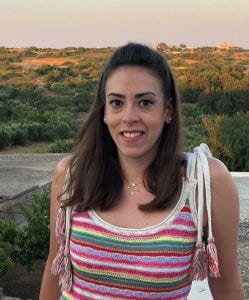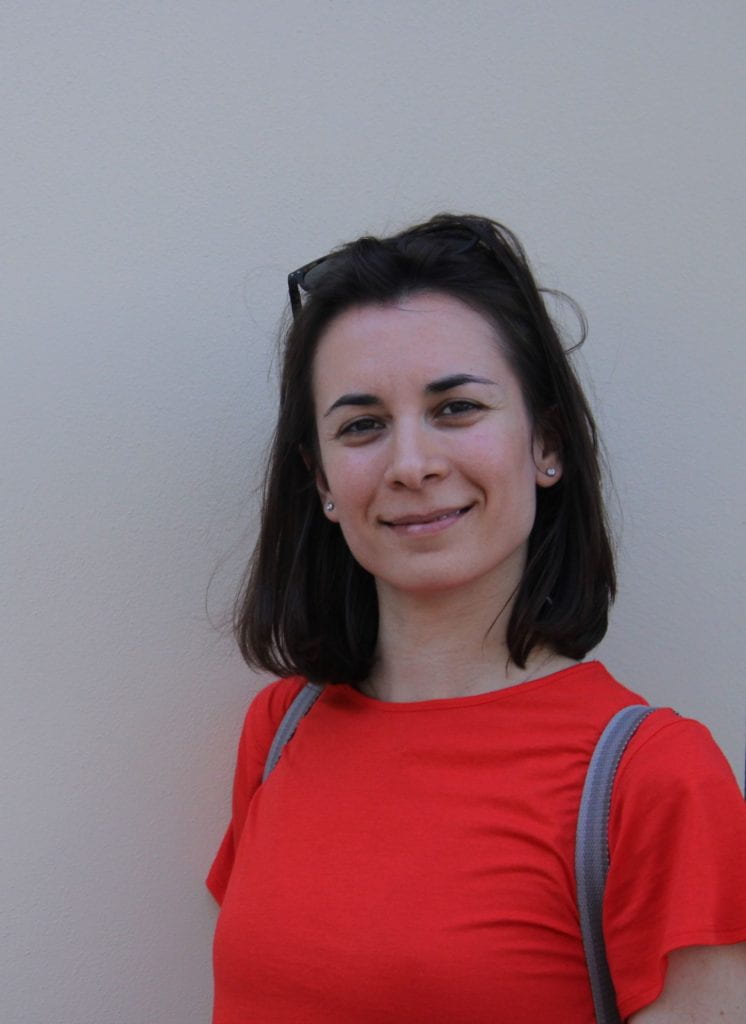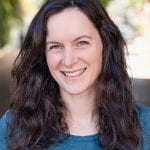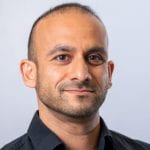Investigating Plasma Exchange as a Treatment of Severe COVID-19 Infection
By Alina Shrourou, on 29 October 2020
Professor Marie Scully is a professor of haemostasis and thrombosis at UCL and a Consultant Haematologist working in non-malignant haematology at UCLH. Professor Scully has recently received a grant of around £360,000 grant from LifeArc for a phase 2 study to investigate the impact of COVID-19 on thrombosis and a potential mitigation therapy through plasma exchange.
What changes does COVID-19 cause in the blood and what does this mean for patients?
COVID-19 is a relatively new disorder that we knew very little about. Information that we had from severely affected countries like China and Italy was given to us in real time, and it became quickly evident that patients with severe symptoms showed two main effects: Inflammation, a reactive process, and thrombosis, a clotting process. As my main area of specialisation is in platelet disorders, immune conditions and in particular a very rare condition called thrombotic thrombocytopenic purpura (TTP), by background, in conjunction with our ICU colleagues, we were in a position to undertake and understand both of those two pathways in relation to COVID-19.
We had to spend time looking at all the thrombotic potentials and factors. Initially, it was thought that there were many blood clotting factors affected, however we were able to quickly disprove this internally because of the wealth of patients we had. What we noticed, was that all the blood clotting factors are essentially normal other than it would appear, one of them – von Willebrand factor (VWF), one of the biggest proteins in our body. These were found to be very high, which we would expect in patients who are severely unwell.
One of the specific factors that we look at in our disease area of TTP is something called ADAMTS13, an enzyme which is important in slicing up and controlling von Willebrand factor. This is crucial in ensuring that when we bleed, we have enough von Willebrand factor at the right length with platelets to stem bleeding in our body, but conversely if the VWF levels are very high and you have long types of the protein, it increases thrombotic risks. We were able to demonstrate in patients with severe COVID, that their VWF and ADAMTS13 levels were disproportionate, so that we were getting a very high ratio.
Furthermore, there were other groups that undertook histopathology and they demonstrated in patients who died from severe COVID, there was evidence of small clots in the blood vessels particularly in the lungs. It was thought that is, in conjunction with the increased thrombotic tendency, was highly significant and contributory.
Later, there was also a suggestion that other organs are affected, including the kidneys, brain and heart. It was on the basis of the inflammatory and thrombotic risk in severe COVID-19 patients, that we undertook a feasibility study to see the role of plasma exchange.
What is plasma exchange and what does the process involve?
Plasma exchange is an intervention that we primarily undertake in extremely sick patients. For us, it’s often in TTP, but it is used in many other areas of medicine. Plasma exchange is a procedure using a machine not dissimilar to a dialysis type machine, where the patient’s blood is removed from their body and the plasma, the straw coloured part of the blood, is taken away and the red cells and platelets are put back in. We then replace plasma with that collected from healthy, non-COVID donors. Patients don’t normally become unwell during this procedure as such, as there is no change in the fluid levels. Risks from it are that you can have reaction to the plasma, but this is extremely low risk given the type of plasma we use in the UK – we use specially treated plasma which prevents reactions and is very protective from viruses and other pathogens.
Why have you identified plasma exchange as a suitable therapeutic option to explore for COVID-19?
We undertook a feasibility exercise, to identify in those patients who had very severe lung injury who were on CPAP, or looked like they may need to be put onto a ventilator because their disease was so progressive. We undertook a daily plasma exchange for 5 days. This involved the removal of a patient’s blood volume.
During this 5 day period, we were able to demonstrate that we could reduce the inflammatory component of COVID-19, which was very important because the inflammation was a continuous process that causes ongoing damage to organ tissue, which requires lessening in order for patients to start to improve. It reduced the thrombotic component of COVID-19 and we were able to bring van Willebrand Factor and ADAMTS 13 levels from very high levels down to normal levels – and that’s only over a five day course.
We also demonstrated that the patient’s respiratory function improved significantly over the five days in comparison to patients that were on intensive care at the time. We were also able to increase the understanding with regards to other organ involvement which was less clear at that time, for our patients that received plasma exchange, all of them had completely steady renal function. In the patients comparably on the intensive care unit that did not have plasma exchange, their renal function deteriorated and some required kidney support via dialysis. Therefore, we were able to show that we were protecting and improving not only the respiratory system, but also other organs, and that was by reducing the inflammatory and thrombotic component of COVID-19 – the effect of the virus hyper stimulating cells.
Please provide an overview of the work you are doing at UCLH for this LifeArc funded project.
The feasibility study was important in demonstrating the benefit of plasma exchange, especially so as plasma exchange is a very expensive and intensive therapy to consider without sufficient data to support its benefit. The data provided from our feasibility study was reviewed by LifeArc, who have supported a phase 2 study.
It is very important, in particularly in a very severe disease like COVID-19, to be able to demonstrate that a therapy is better or comparable in a randomized study to standard of care; we must demonstrate significant efficacy. LifeArc is funding this work through the phase 2 study, where we will investigate the role of plasma exchange compared to not having the treatment, in patients who have severe COVID-19. If we are able to demonstrate benefit of patient outcomes and prevent the need for ventilation and end organ damage, this can be published and replicated by any site in any country.
How will you access appropriate patients for this study?
We are looking at patients with severe COVID-19, which is a very select group of patients who require hospital admission and organ support, primarily the lungs, which may include intubation and ventilation.
Patients must fulfil a certain level of what we call inclusion criteria, which are parameters they have to meet before we can offer them the opportunity to go into the study. This includes being aged between 18-70 and having specific levels of respiratory function.
The review of patients with COVID-19 that would be appropriate for our clinical trials is undertaken on a daily basis at UCLH, so we can identify in real time patients with COVID-19, the disease severity, and we can monitor that and if they meet the criteria, they will be offered access to this clinical study.
How have UCL TRO supported you in this project?
Initially on the back of the feasibility study, we were put in contact with the Translational Research Office (TRO), which is not an area of UCL that I had been familiar with. It was an absolute pleasure to work with Dr Pamela Tranter (Head, Translational Research Group) from the Translational Research Office, who made sure that the project was documented to cover everybody’s needs including the reviewer’s. The whole process really was very straight forward, in regards to accepting the work we had done and the benefit of the work, to supporting the funding application and liaising with LifeArc to see if they would be interested in funding the phase two study. Given that there was likely to be a phase 2 study to directly impact the UK, the time pressure was acknowledged by all, making the process very quick, both with the TRO and with LifeArc who asked the right questions and reviewed the protocol. It was a very fluid and receptive process, and the response we got with regards to funding the phase 2 was really an exceptional award.
Contact the UCL Translational Research Office
What are the next steps for your work?
Now that the study is open and available nationally to whoever wants to take part, I’m eager to complete the study in a very timely manner. This will of course depend on the number of patients that come through but we are pleased to have now started treating patients.
About Professor Marie Scully
Professor Marie Scully is a Consultant Haematologist at University College London Hospitals (UCLH) and Professor of haemostasis and thrombosis at UCL. Professor Scully’s particular area of interest is acquired haemostasis and platelet disorders, specifically Immune Thrombocytopenic Purpura (ITP).
Professor Scully runs specialist ITP and TTP clinics and works on obstetric haematology, as part of a team that specialises in treating varied and complex thrombosis, acquired and inherited bleeding disorders.
 Close
Close







